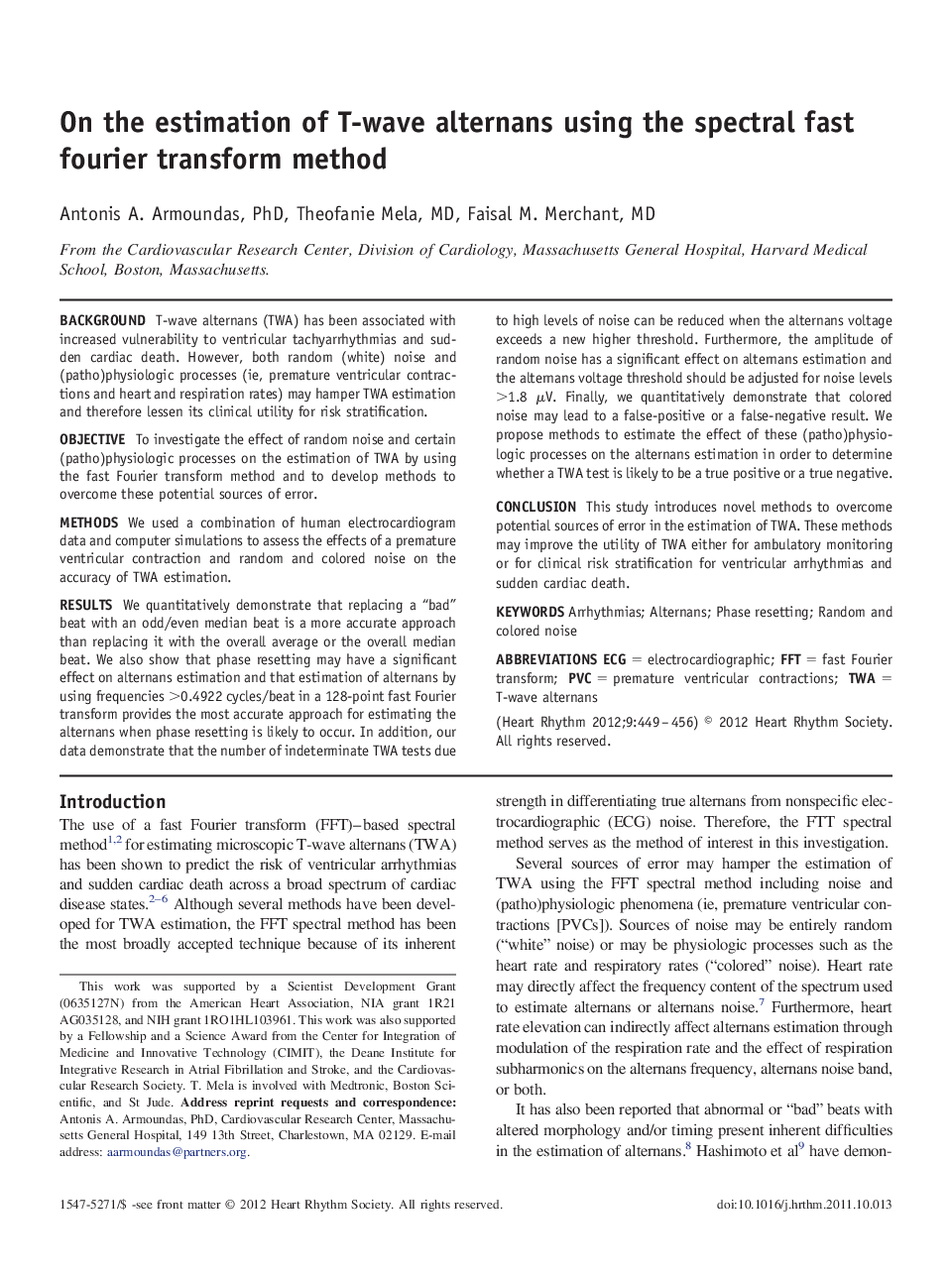| کد مقاله | کد نشریه | سال انتشار | مقاله انگلیسی | نسخه تمام متن |
|---|---|---|---|---|
| 2922659 | 1175851 | 2012 | 8 صفحه PDF | دانلود رایگان |

BackgroundT-wave alternans (TWA) has been associated with increased vulnerability to ventricular tachyarrhythmias and sudden cardiac death. However, both random (white) noise and (patho)physiologic processes (ie, premature ventricular contractions and heart and respiration rates) may hamper TWA estimation and therefore lessen its clinical utility for risk stratification.ObjectiveTo investigate the effect of random noise and certain (patho)physiologic processes on the estimation of TWA by using the fast Fourier transform method and to develop methods to overcome these potential sources of error.MethodsWe used a combination of human electrocardiogram data and computer simulations to assess the effects of a premature ventricular contraction and random and colored noise on the accuracy of TWA estimation.ResultsWe quantitatively demonstrate that replacing a “bad” beat with an odd/even median beat is a more accurate approach than replacing it with the overall average or the overall median beat. We also show that phase resetting may have a significant effect on alternans estimation and that estimation of alternans by using frequencies >0.4922 cycles/beat in a 128-point fast Fourier transform provides the most accurate approach for estimating the alternans when phase resetting is likely to occur. In addition, our data demonstrate that the number of indeterminate TWA tests due to high levels of noise can be reduced when the alternans voltage exceeds a new higher threshold. Furthermore, the amplitude of random noise has a significant effect on alternans estimation and the alternans voltage threshold should be adjusted for noise levels >1.8 μV. Finally, we quantitatively demonstrate that colored noise may lead to a false-positive or a false-negative result. We propose methods to estimate the effect of these (patho)physiologic processes on the alternans estimation in order to determine whether a TWA test is likely to be a true positive or a true negative.ConclusionThis study introduces novel methods to overcome potential sources of error in the estimation of TWA. These methods may improve the utility of TWA either for ambulatory monitoring or for clinical risk stratification for ventricular arrhythmias and sudden cardiac death.
Journal: Heart Rhythm - Volume 9, Issue 3, March 2012, Pages 449–456